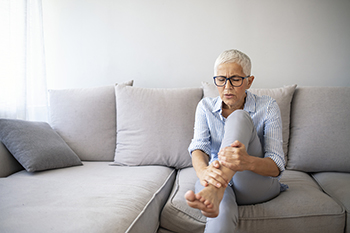Ingrown toenails occur when a toenail grows into the surrounding skin rather than over it. This can affect any toe, but most often happens on the big toe. Signs of an ingrown toenail include the surrounding skin becoming tender, painful, swollen, red, and warm. In some cases, the area can become infected, and white or yellow pus may drain from the area. If an ingrown toenail is showing signs of infection, it is recommended that you seek medical treatment.
Ingrown toenails are usually caused by wearing poorly fitting shoes or trimming the toenails improperly. Shoes that are too tight and have narrow, pointed toes or high heels can compress the toes and cause the toenails to curl and grow into the skin. Trimming your nails into a rounded shape or cutting them too short can cause the edges of the nail to grow into the skin. Other potential causes for ingrown toenails include sustaining an injury near the toenail, having a fungal nail infection, using certain prescription medications, and having an abnormal nail shape. Some people also have a genetic predisposition to developing ingrown toenails.
Preventing ingrown toenails begins with proper trimming. Trim your nails regularly using nail clippers rather than nail scissors. Nail clippers cut the nail straight across, avoiding the rounded edges that can make ingrown toenails likely to develop. Make sure that while trimming the nails that you do not cut them too short. Wear comfortable shoes with low heels and a wide toe area to keep your toes from squishing together.
For more information about ingrown toenails, please consult with a chiropodist.






